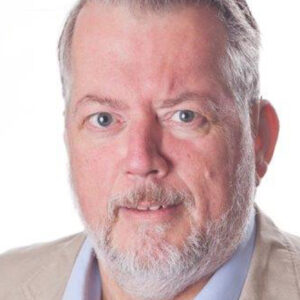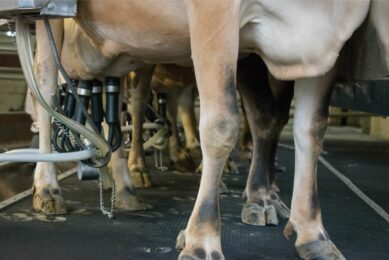A dairy farm heading for rapid growth in Germany
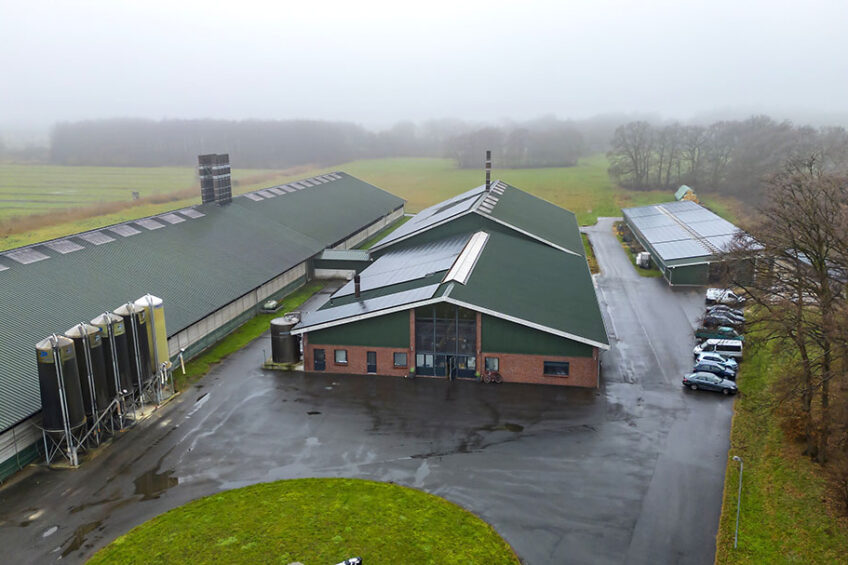
Frank, Mirco and Dennis Heilemann are heading for rapid growth in Rotenburg, Germany. In 2015, they built new housing for 750 cows and expanded by 450 cows. The expansion of the cubicle barn by another 300 places started in April 2023, and the number of cows producing milk will increase to over 1,000.
In the lead-up to the expansion by 300 cows, the Heilemanns “quickly” invested in calf-rearing at the end of 2022. New German regulations, in force since 1 January 2023, state that calves must be 28 days old before they can be transported.
“We sell 10-15 calves a week,” says Mirco Heilemann. “We invested € 70,000 in 56 extra places in group accommodation. I think single-cow housing will probably also be banned in the long term.”
Ease of labour and lighting were paramount during implementation. The prefabricated housing can easily be extended. “We will do that when the 300 extra cows have arrived,” said Mirco.
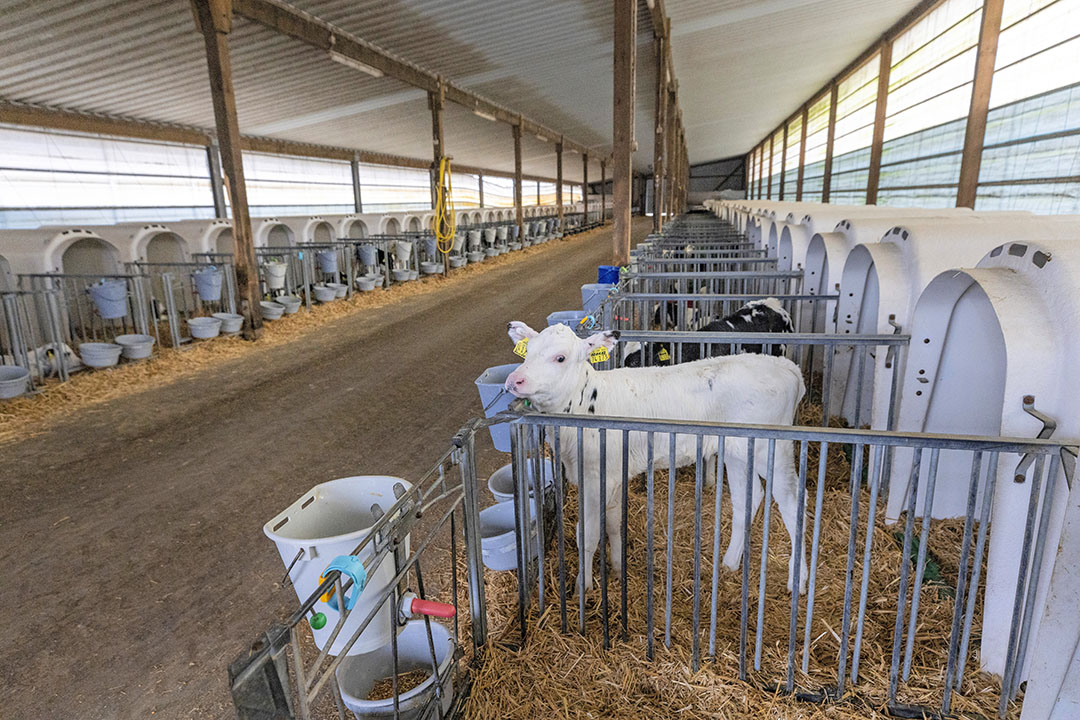
The heifer calves are put in the new rearing area 4 weeks after birth. They then get another week of unsaleable milk, 8 litres a day, plus a mixture of grains. They are weaned at 6 weeks, and in the last week before being moved to a rearing location they are given extra roughage.
Staff are key
The investment in rearing is typical for the farmers, who look for structural solutions. Their farm is picture-perfect. The home location is a stone’s throw away from an industrial area, and there are only dry cows in the cubicle barns. On the other side of the industrial area, 600m away, they have 2 turkey houses, quite a few biogas silos and a beautiful dairy complex. Construction is sleek, the terrain is tidy, and there is asphalt around the barns.
Despite the farm’s size, serene tranquillity reigns, which is only disturbed around 10 o’clock in the morning by a conveyor filling a feed mixer with dry raw material. You do not see employees walking around. “Most of them are now in their apartments, each with their own kitchenette,” says Mirco, adding that 5 are located above the office. “Staff are one of the 3 key factors for our farm,” says the farmer. “We therefore invest in good housing for the Eastern Europeans who milk the cows 3 times a day. Some prefer housing in the village, which we also offer.”
There are 15 employees: 2 herd managers, 10 barn employees (mostly milkers) and 3 for the land work. About half of them are Eastern European, and the other half are Germans from the region. Employees are managed according to their roles.
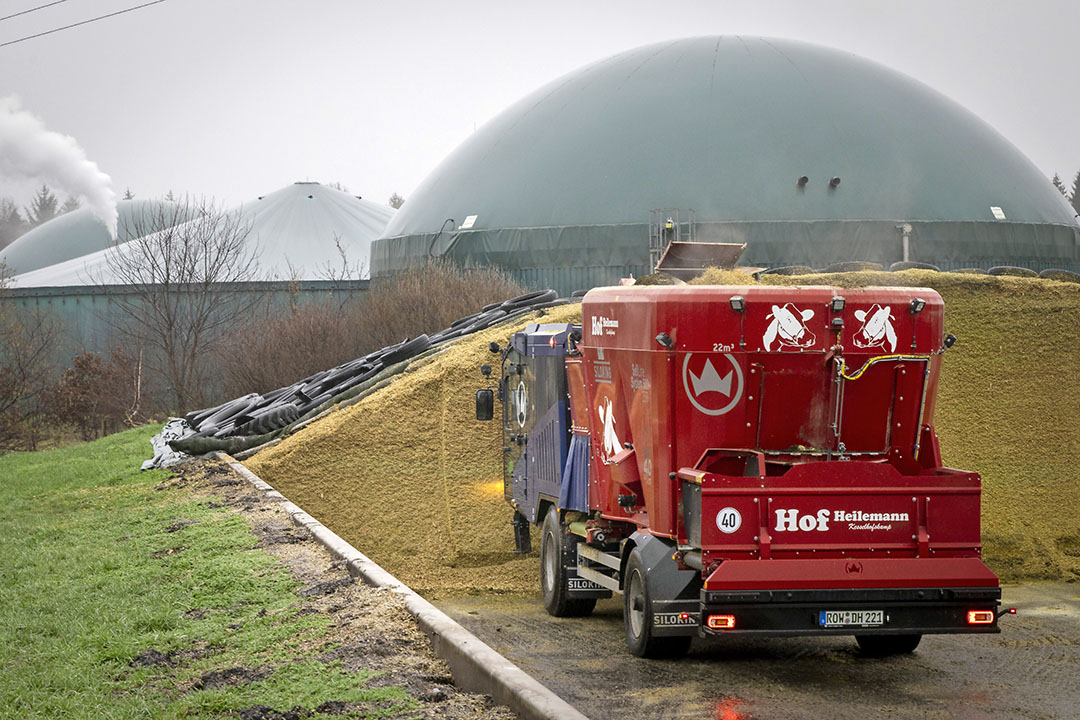
“You have to direct the milkers very specifically, provide clear protocols and make monthly adjustments through refresher courses. The other employees thrive better if you give them some freedom and the opportunity to develop themselves. We also consult with them every month but in a very different way. We really involve them in the results and in our plans.”
The Germans never miss an opportunity to attract and retain good employees. “Without good employees we have no chance.” For example, the company logo is prominently displayed on the back of the mixer. “We had Siloking put it there. They had never had such a request before! That wagon drives through the village every day to feed the youngstock up to 6 months at the rearing location 5km away. This is how we work on recognisability, on our good name. And maybe potential employees will call us if they see something like this.”
Land is the second focus
Since it started in 1955, the farm has grown from 6 cows, 2 sows and 15ha to around 730 cows with youngstock on 950ha. The Heilemanns own 80ha. The average rental and lease costs are € 550/ha/year, although the range is large: € 300-€ 750. Most contracts have a term of 12 years and run until 2034.
“When we built a barn here in 2015 and expanded from 250 to 700 dairy cows, we had to cover at least 51% of the theoretically required feed from our own feed acreage until 2026. We more than meet that requirement,” said Mirco.
“Lease prices are now a bit higher, but not much; 6-7 years ago everyone was chasing vacant land. Many farms are now closing in this region and land is becoming available for lease. When something comes up for sale, it is usually a small portion: 4ha here, 2ha there. We just bought another 3ha. The purchase prices are around € 40,000/ha. But land remains an issue; we deal with it every day. Which contract is expiring, will it be extended and, if not, where can we find replacement?”
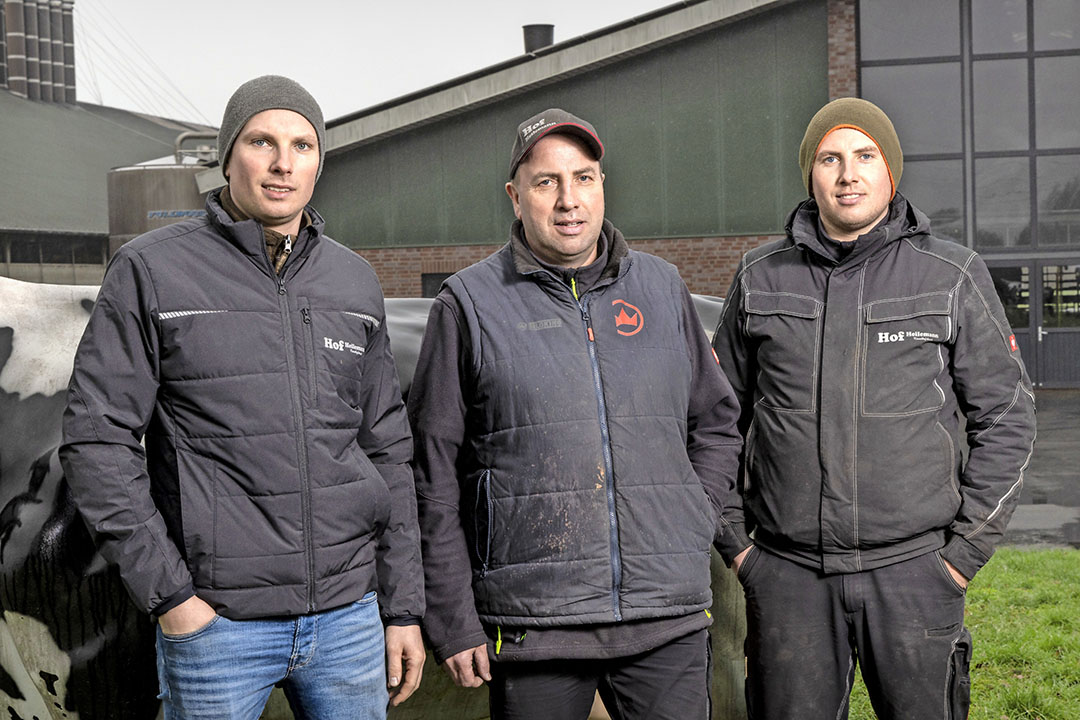
Cattle purchase
Construction, including livestock, cost € 4.5 million in 2015. The barn was immediately filled with the 250 cows they already owned and the 400 cows they purchased from 2 East German farms that ceased operations. “It went ahead without any problems. In the morning we milked 250 cows; in the evening 650. Of course, that week was chaotic and stressful for our employees. However, animal health was and remained good. Because of the sharp floors, we did have to make adjustments that took a few weeks. After that it was fine.”
The German was too keen on replacement with his own cattle. “As a result, 40 places were empty for a while, which cost a lot of money. We will not make that mistake again. If we do not have our own cattle to replace, we will immediately buy more.”
Occupancy is an issue: there are 4 production groups with 150 boxes each and an attention group with 30 boxes. In addition, 40 dry cows walk on straw with a large calving area next to it. “The farm runs smoothest when we work with structural overcrowding for the lactating cows: 4% over-occupancy is our lower limit. When over-occupancy is above 8%, the results fall quickly,” he said.
Even more expansion
With the expansion by 300 cows approaching, the existing 3+3 barn will be extended by half again, and the 4 groups of 150 cubicles will become 6. “The investment is about € 3.5 million for the dairy barn, cows, the expansion of the biogas installation, feed stock and start-up losses,” said Mirco.
Those start-up losses will not be that large. The farmer is aiming for rapid receipts after expansion. He wants to buy 1 or 2 more herds from retiring farmers. “My consultants share my preference; the vet is more sceptical and would rather see us buying heifers. But if you buy an entire herd, you immediately have a full barn, and you produce maximally. After all, everyone has to earn back their money: us, the bank and the tax authorities.”
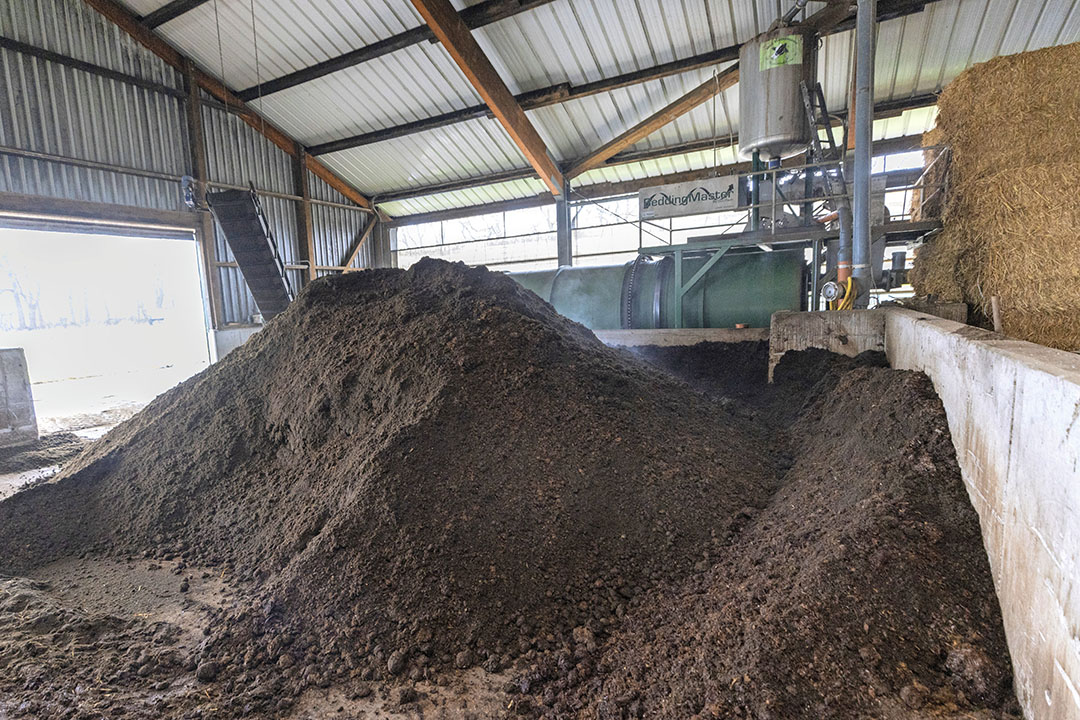
He does not see expansion as a problem. “The supply of milk is shrinking in Germany and north-western Europe.” He wants to compensate for the falling prices and lower margins by lowering the cost price, not by lower production per animal.
“The last litres have to pay off. That is what my father points out every time and is how he calculates and adapts management. You cannot put the brakes on feed. That is counterproductive. You can quickly and easily drop from the current 40kg of milk yield per day to 34 kg. But ramping up again takes much longer. In that respect – management of intensive livestock farming – it’s easier with our turkeys. If something does not work, remove the animals, disinfect the poultry house and start a new round. With cows you cannot just start over if there is an illness. That is why animal health is our third spearhead,” he explained.
Animal health
The farmers guarantee animal health with strict protocols. For example, all colostrum is tested, and the best colostrum goes to the heifer calves that they want to keep. The lower quality colostrum goes to the heifer calves for sale, and the lowest quality goes to the bulls. The growth of the youngstock is monitored. All heifer calves are weighed at birth and when they are moved to the rearing pen 3km away. They stay there until they are 6 months old. They are weighed again when they are moved from there to a rearing farm 160km away near Lubeck, and on arrival at the dairy farm 8-10 weeks before the expected calving date. The calving age is just under 23 months.
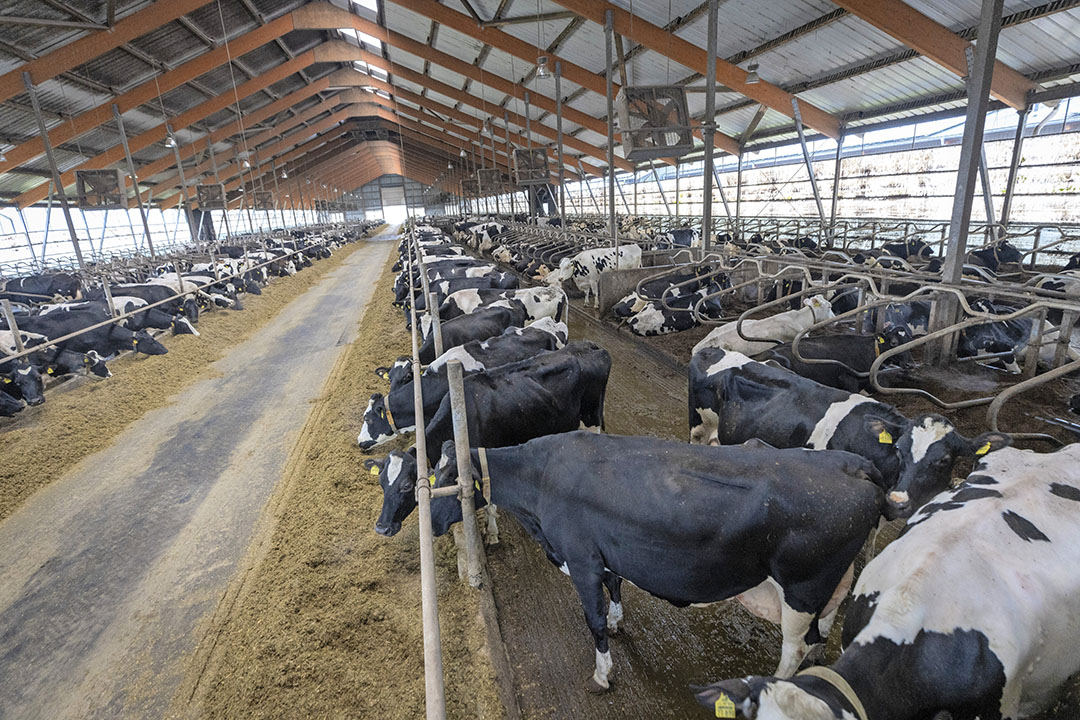
“We have noticed through the purchase of cattle from former Landwirtschaftliche Produktionsgenossenschaften that size is much less important than is assumed. Heifers that calve at the right time and continue to grow in the first and second lactation: that works well for us.”
The vet supervises the farm each week. Every Monday morning, he receives the most important statistics of the past week by email: number of cows, number of culled cows (and the reasons), number of inseminations, births, the incidence of mastitis, percentage of hooves treated and percentage of cows treated.
“As a herd manager, you tend to see an increase in one of those things as a coincidence, an incident. Veterinarians are much sharper on this and will tell you immediately. That way, you keep a tight grip on the herd.”
It needs to be tight, given the average production of 11,800 kg per year at 3.90% fat and 3.49% protein and a calving interval of 394 days. The average cow is 69.4 months old and has produced 39,254 kg when it leaves the farm. “Not bad indeed, but we still aim to have an average of 12,500 kg in 2024. In particular, stricter protocols and further optimisation of nutrition are points of attention.”
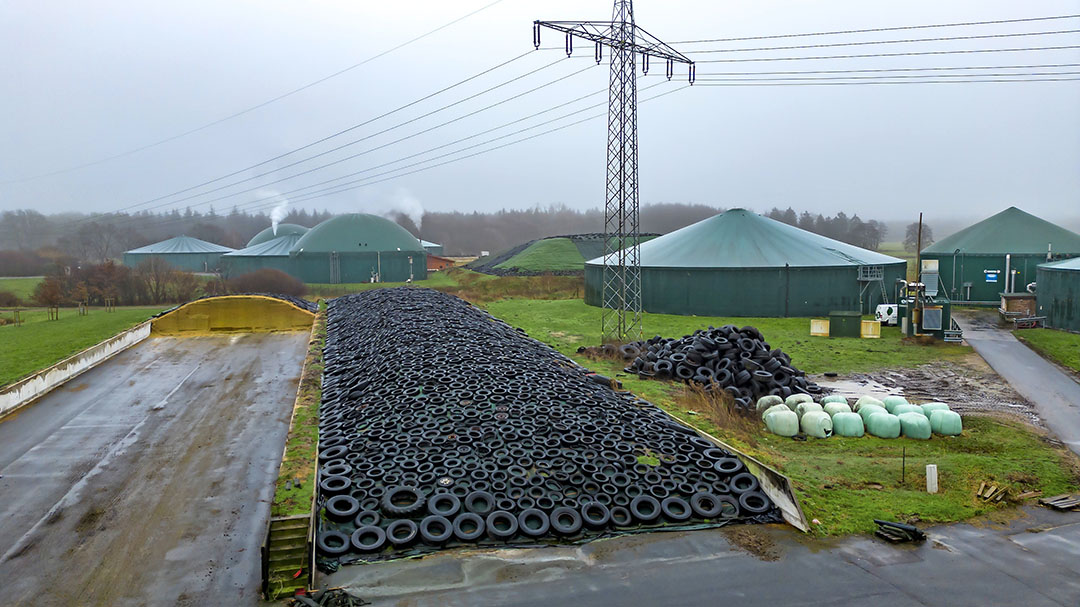
According to the farmer, staff are the decisive factor in the aspects of land, personnel and animal health. “Ultimately, you need more barn space, staff and healthy cows for extra milk,” said Mirco. “The barn is right there, and you can organise land and animal health. But competent staff are and will remain extremely hard to find. Good housing, good working hours and remuneration and further training are important in this respect. We pay the milkers € 14 per hour, and we pay trained people double that amount. The challenge is not to care for 700, 900 or 1,000 cows, but to get the staff to work with the same commitment as you do.”
You must have that ambition, noted Mirco: “You can only optimise once that foundation is in place. In recent years, we have consolidated and optimised work processes. Now we are facing the next growth step, for which much has already been planned and completed. After construction and expansion, consolidation and optimisation will follow. Then we have to see whether that last extra employee is really necessary. You first blow up the farm and then you try to slim down for the best return.”
Join 13,000+ subscribers
Subscribe to our newsletter to stay updated about all the need-to-know content in the dairy sector, two times a week.


